Florence Cathedral (Italian: Duomo di Firenze), formally the Cathedral of Saint Mary of the Flower (Italian: Cattedrale di Santa Maria del Fiore [katteˈdraːle di ˈsanta maˈriːa del ˈfjoːre]), is the cathedral of Florence, Italy. It was begun in 1296 in the Gothic style to a design of Arnolfo di Cambio and was structurally completed by 1436, with the dome engineered by Filippo Brunelleschi. The exterior of the basilica is faced with polychrome marble panels in various shades of green and pink, bordered by white, and has an elaborate 19th-century Gothic Revival façade by Emilio De Fabris.
The cathedral complex, in Piazza del Duomo, includes the Baptistery and Giotto's Campanile. These three buildings are part of the UNESCO World Heritage Site covering the historic centre of Florence and are a maj...Read more
Florence Cathedral (Italian: Duomo di Firenze), formally the Cathedral of Saint Mary of the Flower (Italian: Cattedrale di Santa Maria del Fiore [katteˈdraːle di ˈsanta maˈriːa del ˈfjoːre]), is the cathedral of Florence, Italy. It was begun in 1296 in the Gothic style to a design of Arnolfo di Cambio and was structurally completed by 1436, with the dome engineered by Filippo Brunelleschi. The exterior of the basilica is faced with polychrome marble panels in various shades of green and pink, bordered by white, and has an elaborate 19th-century Gothic Revival façade by Emilio De Fabris.
The cathedral complex, in Piazza del Duomo, includes the Baptistery and Giotto's Campanile. These three buildings are part of the UNESCO World Heritage Site covering the historic centre of Florence and are a major tourist attraction of Tuscany. The basilica is one of Italy's largest churches, and until the development of new structural materials in the modern era, the dome was the largest in the world. It remains the largest brick dome ever constructed.
The cathedral is the mother church of the Archdiocese of Florence, whose archbishop is Giuseppe Betori.
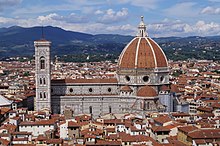 The Duomo viewed from the heights of Piazzale Michelangelo
The Duomo viewed from the heights of Piazzale MichelangeloSanta Maria del Fiore was built on the site of Florence's second cathedral dedicated to Saint Reparata;[1] the first was the Basilica di San Lorenzo di Firenze, the first building of which was consecrated as a church in 393 by St. Ambrose of Milan.[2] The ancient structure, founded in the early 5th century and having undergone many repairs, was crumbling with age, according to the 14th-century Nuova Cronica of Giovanni Villani,[3] and was no longer large enough to serve the growing population of the city.[3] Other major Tuscan cities had undertaken ambitious reconstructions of their cathedrals during the Late Medieval period, such as Pisa and particularly Siena where the enormous proposed extensions were never completed.
City council approved the design of Arnolfo di Cambio for the new church in 1294.[4] Di Cambio was also architect of the church of Santa Croce and the Palazzo Vecchio.[5][6] He designed three wide naves ending under the octagonal dome, with the middle nave covering the area of Santa Reparata. The first stone was laid on 9 September 1296, by Cardinal Valeriana, the first papal legate ever sent to Florence. The building of this vast project was to last 140 years; Arnolfo's plan for the eastern end, although maintained in concept, was greatly expanded in size.
After Arnolfo died in 1302, work on the cathedral slowed for almost 50 years. When the relics of Saint Zenobius were discovered in 1330 in Santa Reparata, the project gained a new impetus. In 1331, the Arte della Lana, the guild of wool merchants, took over patronage for the construction of the cathedral and in 1334 appointed Giotto to oversee the work. Assisted by Andrea Pisano, Giotto continued di Cambio's design. His major accomplishment was the building of the campanile. When Giotto died on 8 January 1337, Andrea Pisano continued the building until work was halted due to the Black Death in 1348.
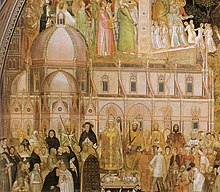 The Duomo, as if completed, in a fresco by Andrea di Bonaiuto, painted in the 1360s, before the commencement of the dome
The Duomo, as if completed, in a fresco by Andrea di Bonaiuto, painted in the 1360s, before the commencement of the domeIn 1349, work resumed on the cathedral under a series of architects, starting with Francesco Talenti, who finished the campanile and enlarged the overall project to include the apse and the side chapels. In 1359, Talenti was succeeded by Giovanni di Lapo Ghini (1360–1369) who divided the centre nave in four square bays. Other architects were Alberto Arnoldi, Giovanni d'Ambrogio, Neri di Fioravanti and Andrea Orcagna. By 1375, the old church Santa Reparata was pulled down. The nave was finished by 1380, and only the dome remained incomplete until 1418.
On 19 August 1418,[7] the Arte della Lana announced an architectural design competition for erecting Neri's dome. The two main competitors were two master goldsmiths, Lorenzo Ghiberti and Filippo Brunelleschi, the latter of whom was supported by Cosimo de Medici. Ghiberti had been the winner of a competition for a pair of bronze doors for the Baptistery in 1401 and lifelong competition between the two remained sharp. Brunelleschi won and received the commission.[8]
Ghiberti, appointed coadjutor, drew a salary equal to Brunelleschi's and, though neither was awarded the announced prize of 200 florins, was promised equal credit, although he spent most of his time on other projects. When Brunelleschi became ill, or feigned illness, the project was briefly in the hands of Ghiberti. But Ghiberti soon had to admit that the whole project was beyond him. In 1423, Brunelleschi was back in charge and took over sole responsibility.[9]
Work on the dome began in 1420 and finished in 1436. The cathedral was consecrated by Pope Eugene IV on 25 March 1436, (the first day of the year according to the Florentine calendar). It was the first 'octagonal' dome in history to be built without a temporary wooden supporting frame. During the consecration in 1436, Guillaume Dufay's motet Nuper rosarum flores was performed.
The decoration of the exterior of the cathedral, begun in the 14th century, was left unfinished after the initial works done by Arnolfo di Cambio, which led Lorenzo de' Medici to initiate a design competition for the façade between 1490 and 1491.[10] The competition went ultimately nowhere, and the façade was not completed until 1887, when the polychrome marble façade was completed with the design of Emilio De Fabris. The floor of the church was relaid in marble tiles in the 16th century.
The exterior walls are faced in alternate vertical and horizontal bands of polychrome marble from Carrara (white), Prato (green), Siena (red), Lavenza and a few other places. These marble bands had to repeat the already existing bands on the walls of the earlier adjacent baptistery the Battistero di San Giovanni and Giotto's Bell Tower. There are two side doors: the Doors of the Canonici (south side) and the Door of the Mandorla (north side) with sculptures by Nanni di Banco, Donatello, and Jacopo della Quercia. The six side windows, notable for their delicate tracery and ornaments, are separated by pilasters. Only the four windows closest to the transept admit light; the other two are merely ornamental. The clerestory windows are round, a common feature in Italian Gothic.
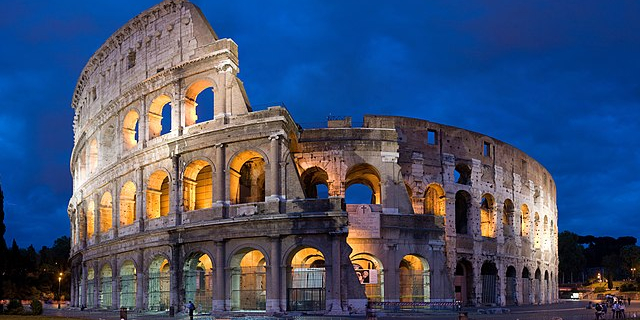




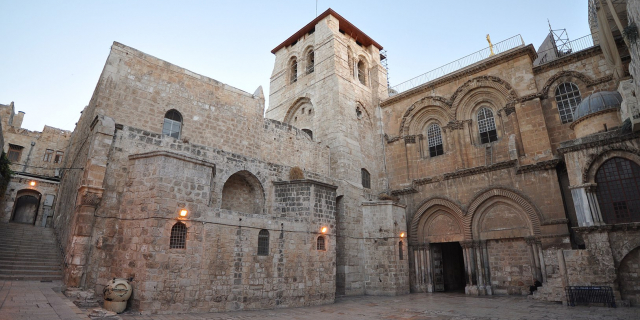
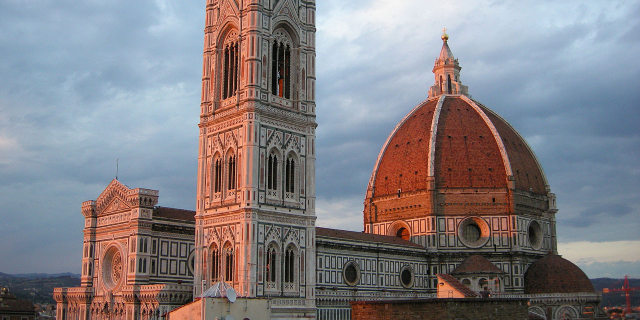

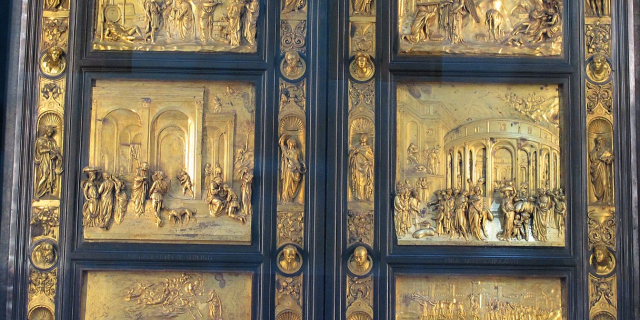

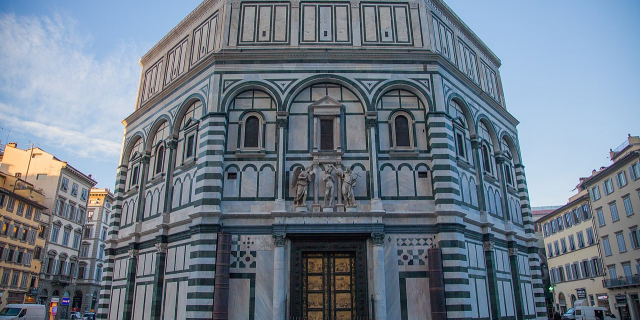
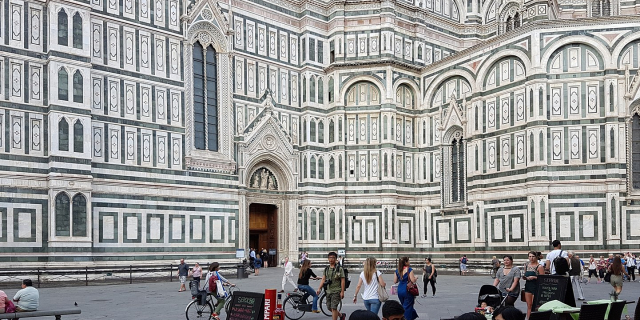

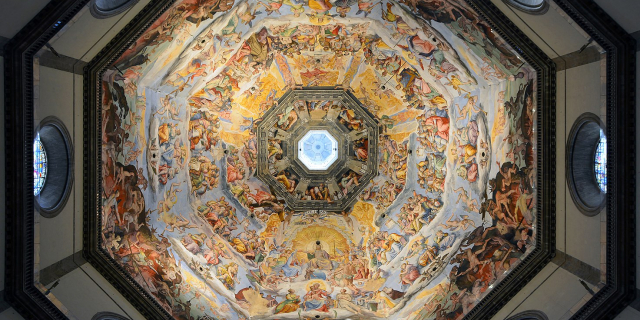




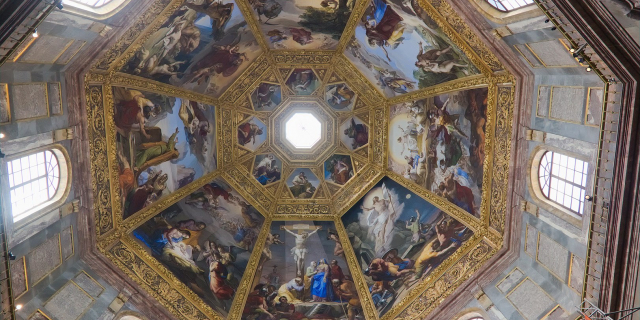










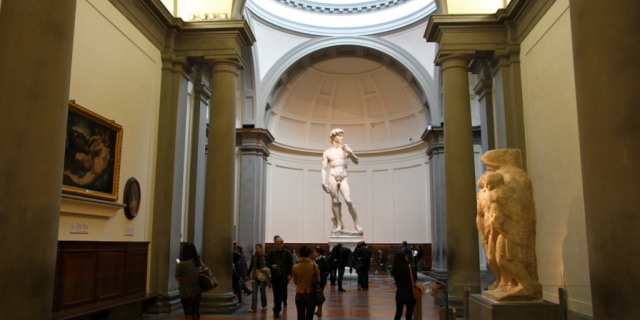
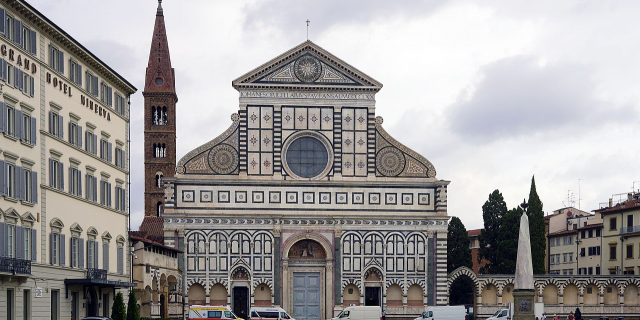
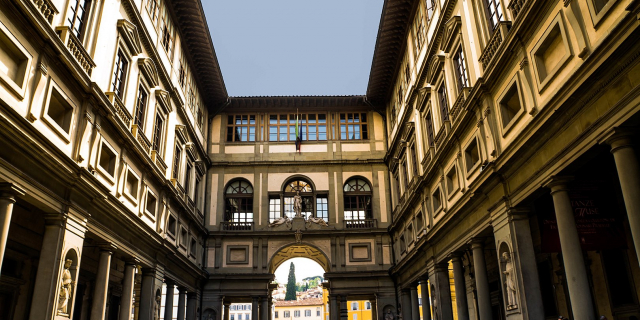
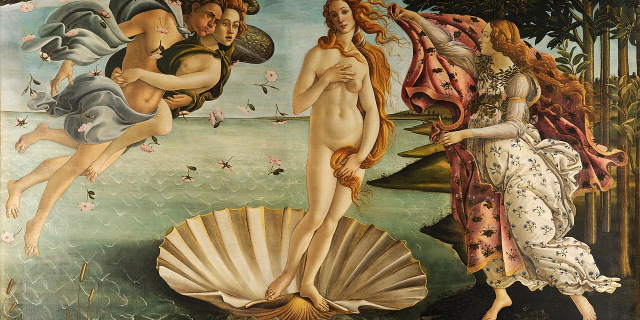
Add new comment